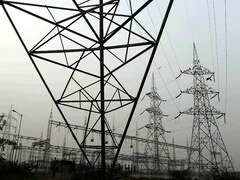Report on Matiari-Lahore Transmission Line Underutilisation Delayed
ISLAMABAD: Despite a year passing, a high-level committee, led by Federal Minister Dr. Musadik Malik, has yet to present its findings to Prime Minister Shehbaz Sharif regarding the underutilisation of the over $1.5 billion Matiari to Lahore ±660 KV HVDC Transmission Line (MTL), sources have revealed.
Last April, the Prime Minister established a committee, initially headed by the then Minister for Petroleum Senator Musadik Malik (now Minister for Climate Change), to investigate the less than full capacity operation of the Matiari Transmission Line.
The committee comprised Minister for Power Sardar Awais Ahmad Khan Leghari, Secretary of the Power Division, Chairman of the National Electric Power Regulatory Authority (NEPRA), and former Managing Director of NTDC, Dr. Fiaz Ahmed Chaudhary, and was tasked with completing its assignment within one week.
Inquiry Committee’s Terms of Reference
The inquiry committee’s Terms of Reference (ToRs) included:
- Investigating the underutilisation of the Matiari Transmission Line’s capacity for power evacuation and transmission from the south to the north.
- Identifying deficiencies in planning for evacuation and transmission via the high voltage line, leading to low utilisation despite substantial capacity payments and ample time for power plant completion in the south.
- Assigning responsibility and recommending actions for negligence by responsible individuals or entities.
- Considering and recommending solutions for maximizing power evacuation and transmission from the south to the north.
- Addressing any other relevant issues pertaining to the NTL matter.
The evacuation of power from south to north frequently arises during public hearings on Fuel Charges Adjustments (FCAs) at NEPRA. The financial implications of using imported fuels in costly plants are included in the FCA and passed on to consumers. NPCC/NTDC officials attribute this to system constraints hindering power evacuation from south to north. NEPRA has withheld Rs 47 billion from NTDC due to the latter’s failure to improve its transmission system.
The Prime Minister’s Office (PMO) has requested the Committee to submit its report to the Prime Minister, sources indicated.
According to sources, the majority of coal and wind generation is located in Sindh (South), while the highest demand is in Central Punjab, including Lahore, Faisalabad, and Gujranwala. Some transmission lines span 1000 kilometers.
Sources claim that maintaining the electric and magnetic force requires reactive energy, as frequency fluctuations can cause system breakdowns.
To sustain magnetic force, reactive energy is needed along the transmission line, but a consistent supply is lacking, contributing to the MTL’s underutilisation, sources added.
“Required capacitors are not available, nor are there power plants to generate reactive power, unlike the Muzaffargarh power plants, which are now closed. Guddu is also frequently unavailable,” the sources stated.
There is a need to bolster demand in areas like Lahore, but there is no grid station to maintain it.
In 2022, NTDC initiated two major projects involving new grid stations and transmission lines to decrease system and line losses and enhance the voltage profile of the Lahore Electric Supply Company, but the projects remain unfinished.
Recently, the Chairman of NEPRA, also a member of the PM Committee, criticised NTDC for its failure to complete the project and for repeatedly seeking extensions.
Sources suggest that if no power plant can supply reactive energy, compensatory capacitors should be installed to ensure stable electricity supply from the MTL.
Sources also contend that when demand drops to 8000MW or 9000MW, frequency imbalances occur, resulting in breakdowns.
Another problem is that the jumpstart facility for power plant engines does not function when energy levels drop to zero, as energy is required to start the initial engine. This facility exists but fails to work when needed, as demonstrated during the most recent breakdown.
When contacted, Dr. Musadik Malik, Convener of the Committee, said that the report is prepared for submission to the Prime Minister and that he intends to present it next week.
However, one committee member mentioned that the inquiry report is currently under final review and that the matter is complex.
Another source stated that the World Bank, Asian Development Bank, Islamic Development Bank, AIIB, and EIB are prepared to finance the installation of reactive power compensation devices, with the project potentially starting in 2026-27.



Comments (0)
No comments yet. Be the first to comment!
Leave a Comment